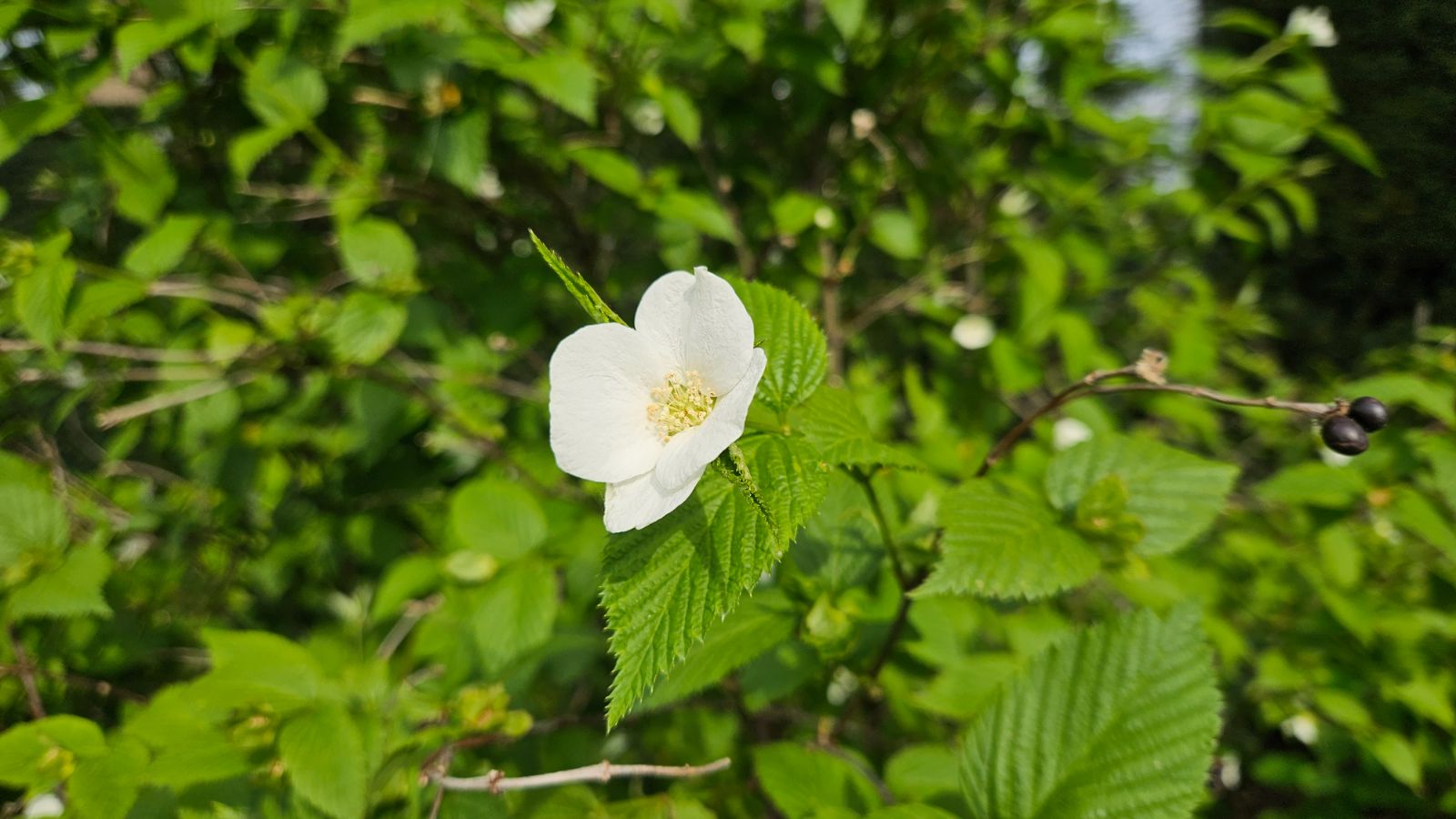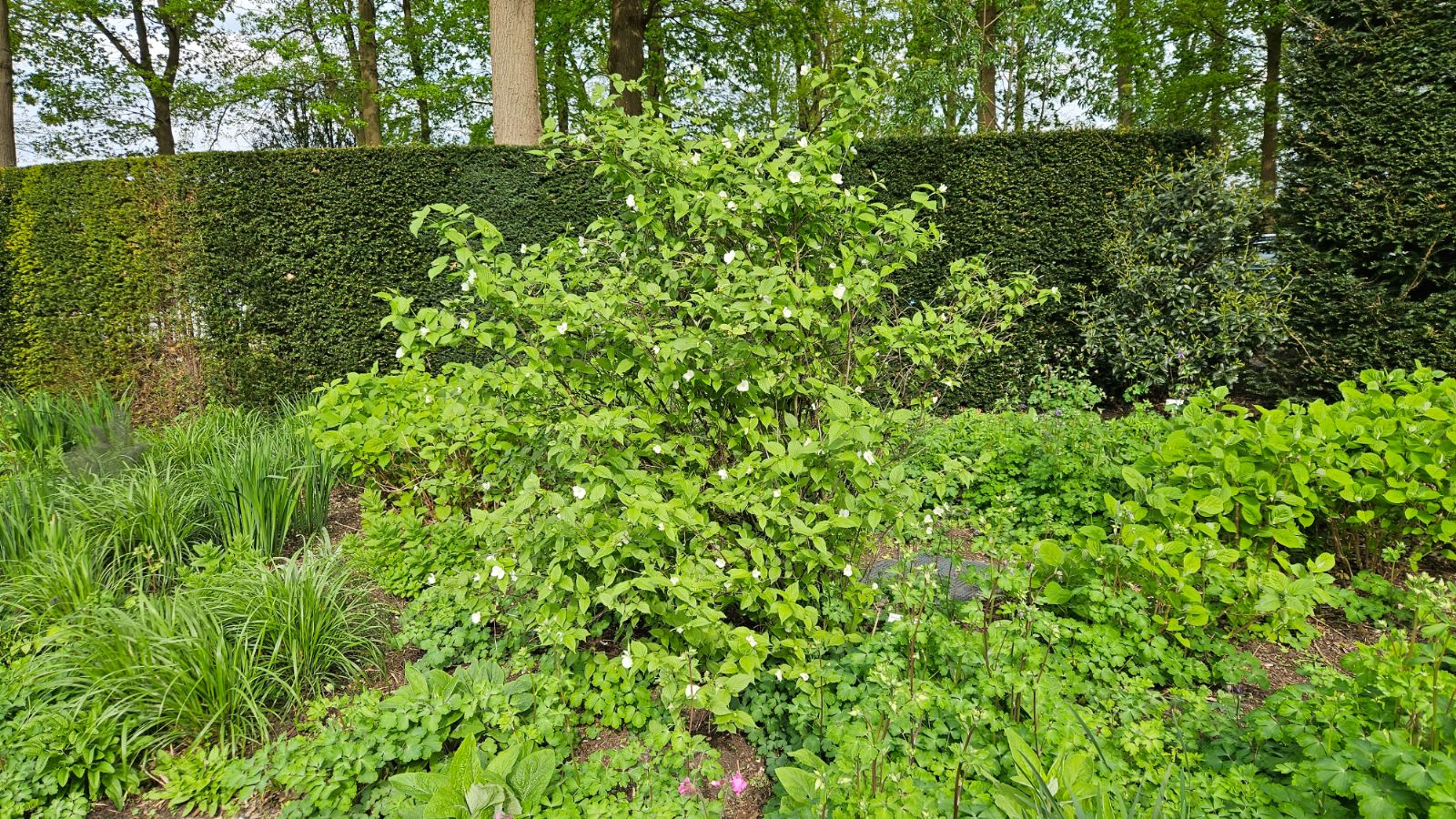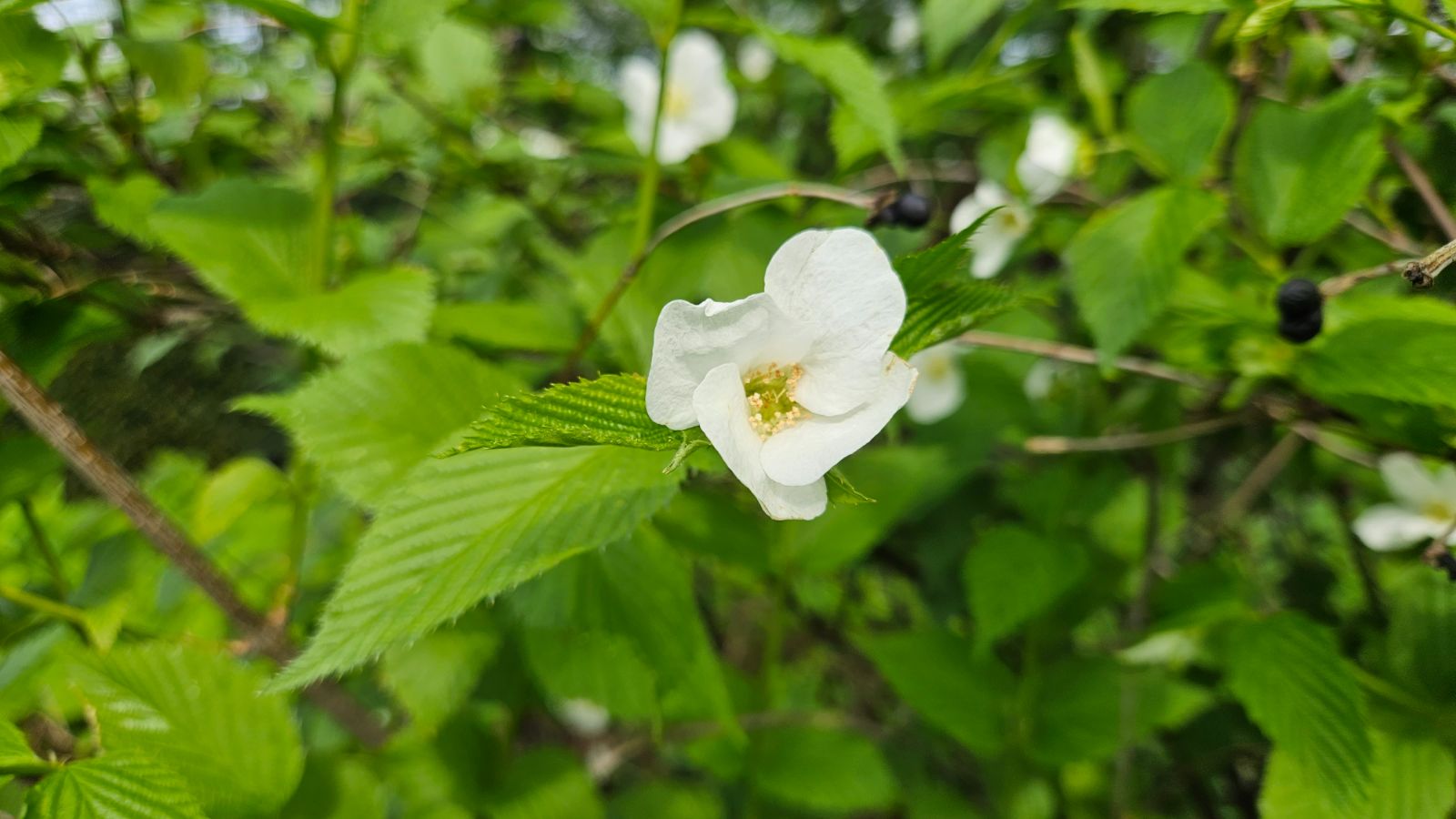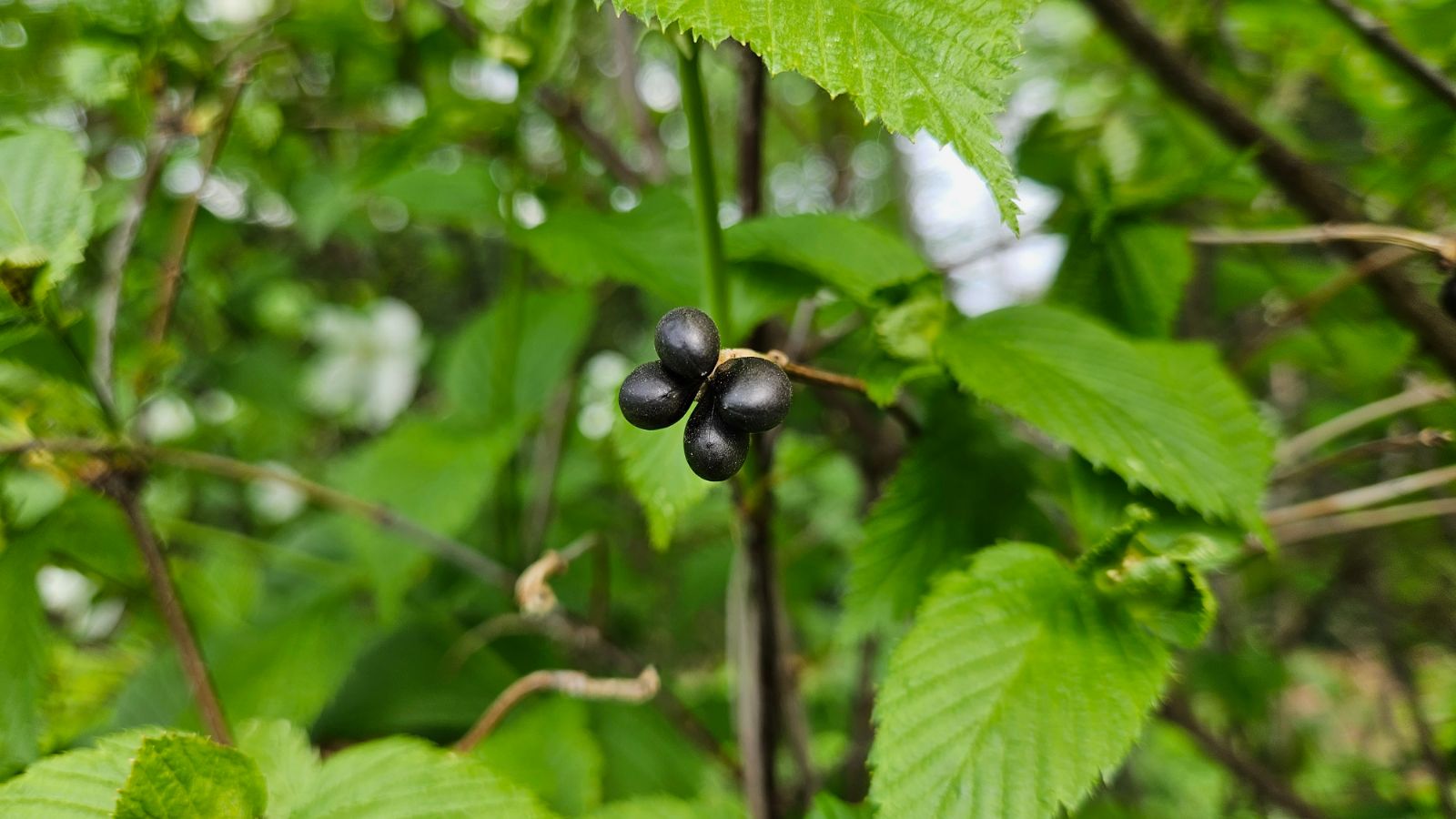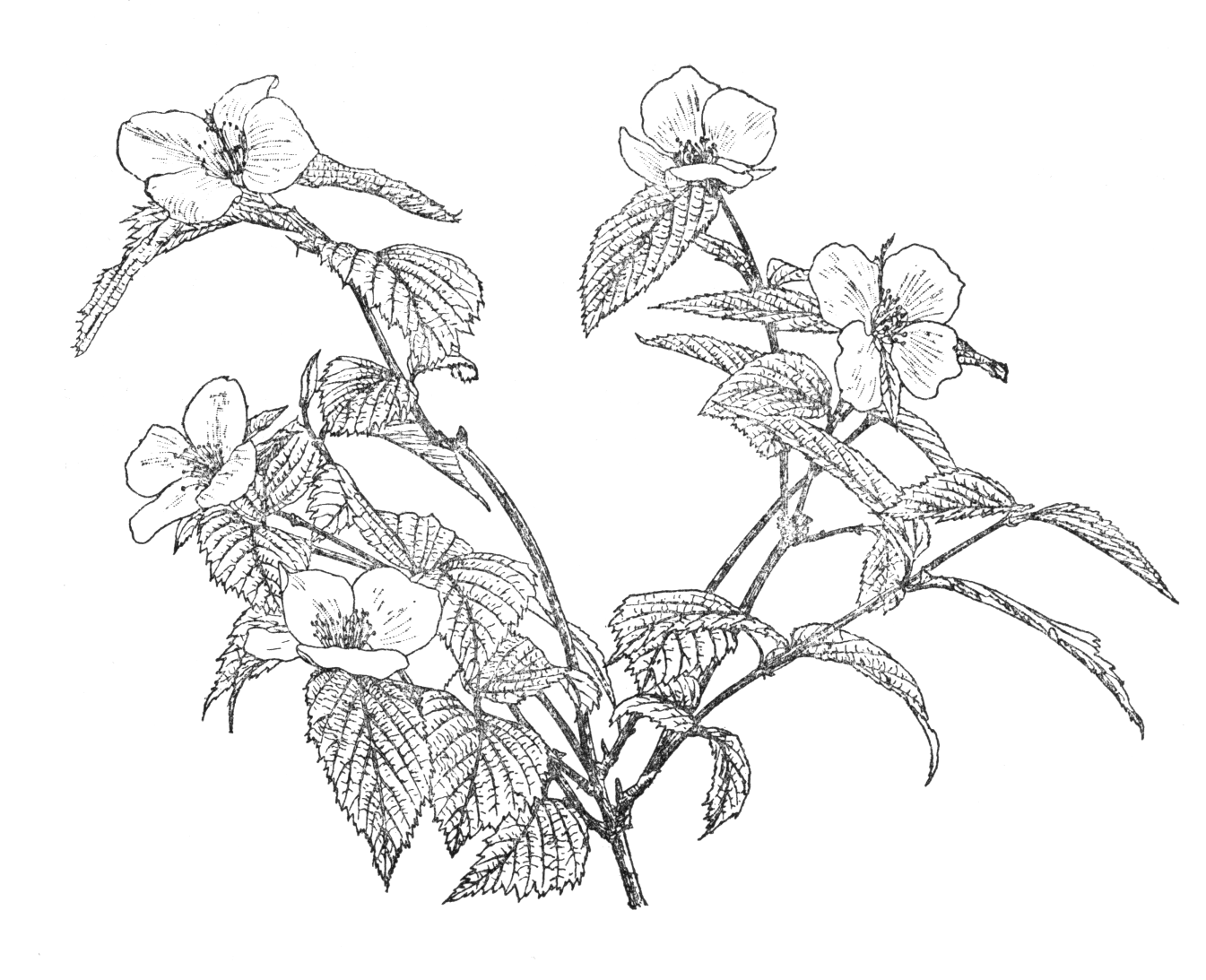Rhodotypos scandens
Credits
Article from Bean's Trees and Shrubs Hardy in the British Isles
Recommended citation
'Rhodotypos scandens' from the website Trees and Shrubs Online (treesandshrubsonline.
Genus
Synonyms
- Corchorus scandens Thunb.
- R. kerrioides Sieb. & Zucc.
Other taxa in genus
A deciduous shrub growing about 6 ft high; branches erect; young shoots glabrous. Leaves opposite, ovate, long-pointed, 21⁄2 to 4 in. long, half as much wide, upper surface dark green and soon becoming glabrous, undersurface paler and hairy, prominently parallel-ribbed, the margins deeply, irregularly, and sharply toothed. Flowers solitary at the end of short twigs, 11⁄4 to 2 in. across, pure white; petals four, rounded, with a short claw; calyx four-lobed, the lobes leaf-like, hairy, toothed, persisting until the fruit is ripe. Fruits about the size of small peas, shining, black, clustered above the calyx. Bot. Mag., t. 5805.
Native of China, and perhaps Japan; introduced in 1866. It is a very hardy plant, and quite easily propagated by cuttings made of moderately soft wood and placed in brisk bottom heat. Its flowers are at their best in May and June, but they continue to expand up to the end of July.

